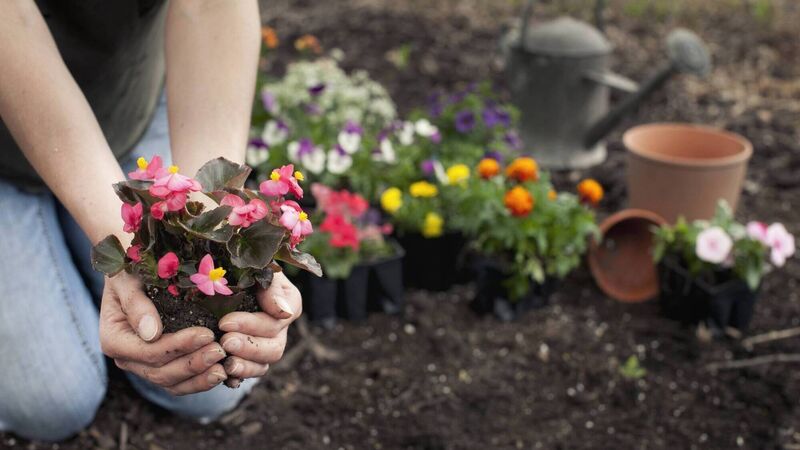Why these three plants need your attention now

Three plants which are demanding attention in gardens at the moment as we are in their time of the year, namely hydrangeas, tuberous begonias and buddleias.
Hydrangeas are very much in vogue over the last few years having spent some time in the doldrums in terms of popularity, being very much thought of as an old-fashioned plant synonymous with the cottage garden of granny or granddad.
Their rebirth in popularity is down to several factors: that self-same cottage garden style is very popular right now, and many new cultivars of hydrangea are being introduced each year.
No longer do we need to persevere with only that sickly pink or blue bush omnipresent in all gardens of a certain vintage. No, now the choice of mophead and lacecap varieties is broad enough to delight even the harshest of hydrangea critics. Hydrangea ‘Annabelle’ is much loved by designers and gardeners alike for she brings bountiful blooms of pure white into the garden. Her greatest drawback may be that she performs too well, her slender and elegant stems often buckling under the sheer weight of the blooms atop.
Nothing can replicate the purity and powder puff-ball appearance of ‘Annabelle’ but for those who need their blooms to stand up and tolerate the winds without being molly-coddled, then it is time to look at the Hydrangea panicualta varieties.
Most popular of these is probably ‘Limelight’ the flowers of which begin as green buds and open up gradually into large upturned cones of bright white which take on the colours of autumn as they fade, towards October and November. ‘Limelight’ and many of the panicualta types will grow to as high as 2 metres and more, upright in habit though with a similar spread.
Hydrangea paniculata ‘Silver Dollar’ is more suited to a small garden and even to growing in pots and containers. At the moment you will find it covered in the same conical shaped, pure white flowers but on a much smaller plant as ‘Silver Dollar’ won’t grow higher than 1/1.2 metres.
I still remember the first time I ever grew tuberous begonias as a child. The tubers came from the, now-long gone McKenzie’s on Camden Quay. I planted them, as instructed, in pots during spring and I remember being amazed watching the foliage emerge through the soil and unfurl into broad fleshy leaves and then, during mid-summer, among all the leaves I would see the first bud and then many more as they opened up into the most wonderful of bright coloured flowers. Those first ones that I grew were yellow and red. This year I planted tubers of Begonia ‘Mother’s Day’ during the lockdown in memory of my own mum. It is now full of leaf and I am just waiting for the buds to open. It’s a pendulous form with flowers of white with a pink blush. I have not grown it before so really can’t wait to see how it does.
The tuberous forms of begonia are sensational at this time of the year as the blooms are really just starting now to come into their own and so when many of the other bedding and summer flowers are gone, the begonias will keep the colour party going right into the autumn and early winter.
They’re not loved by bees and pollinators unfortunately but nobody’s perfect. To make up for that, I have Cosmos and Night Scented Stock planted in the same pots so that any visiting bees and moths will have something on which to feast.
You may be surprised to see me talking about buddleia as a choice plant in the garden for so many of them are veritable thugs. Do be careful which one you introduce into your own outdoor room for the common Buddleia davidii is indeed a bully of a plant, bad enough to be considered an invasive species, though I do love the flowers of even the worst marauder when growing in the wild. So too do butterflies, after whom it gets its common name butterfly bush and bees.
However, in the same way that Rhododendron ponticum should never be considered a welcome garden plant there are thousands of species and varieties which make sought-after additions to any garden and so it is with the buddleia.
The ‘Free Petite’ range of buddlieas are, as they sound, free-flowering and dwarf. Growing to only 60cm x 60xm these are ideal to grow in a small garden or even in a planter on the patio if you want all the colour and pizzazz that a buddleia brings but on a smaller scale. Sit back and admire as your plant comes alive with butterflies and life over the next few months.

Subscribe to access all of the Irish Examiner.
Try unlimited access from only €1.50 a week
Already a subscriber? Sign in
CONNECT WITH US TODAY
Be the first to know the latest news and updates









